
Akaishi Goyomatsu
Japanese bonsai is recognized worldwide and exported globally for its high level of craftsmanship. Among Japanese bonsai, however, there are various production areas in Japan and a wide range of artisans who possess techniques that have been handed down in the region. This website will introduce you to the appeal and purchasing method of Akaishi-Goyomatsu, the highest-quality and most valuable bonsai in Japan that has won awards at many fairs, and explain to you how to get an authentic Japanese bonsai without coming to Japan.
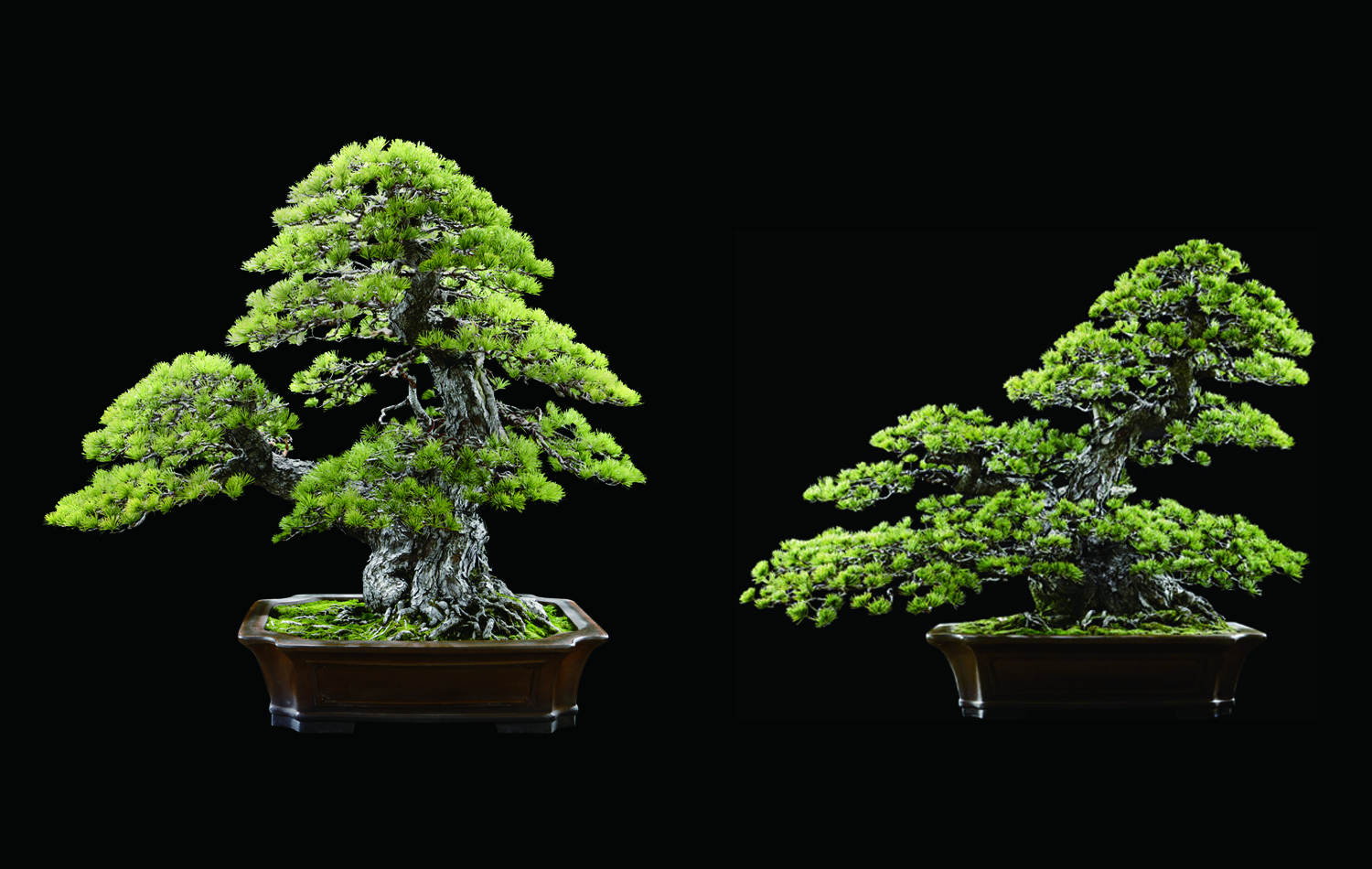
From Japanese creators to you who reside overseas
We, who run this website, are a Japanese creator group. There are several bonsai production areas in Japan and here, Shikokuchuo of Ehime Prefecture, is one of the production areas of pine bonsai. This area has been attracting attention in recent years as it was placed 7th on the “52 Places to Go in 2019” article, published by The Guardian and The New York Times, and as it hosted the Setouchi Triennale. The blessed location of the Setouchi region, with its sandy soil, excellent drainage, little rain, and long hours of sunshine, has made it possible to create distinctive bonsai. The branded bonsai Akaishi-Goyomatsu is a bonsai which creation is achievable due to the preservation of the original Japanese white spine species that grows natively in this area since ancient times.
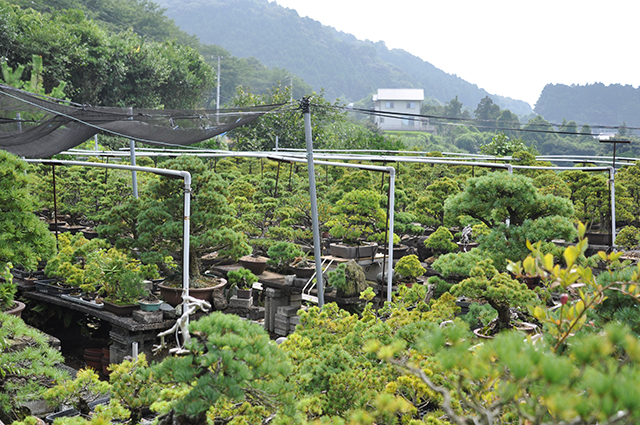
Is the Japanese bonsai authentic?

You can get Japanese bonsai, which is exported globally, in your country as well. But is it truly an authentic Japanese bonsai? Until now, there has never been any bonsai supplier abroad that is directly managed by a Japanese firm. Those bonsai sold abroad are bought by the bonsai business in the respective country from elsewhere. Exporting bonsai is a very difficult task as the bonsai needs to clear strict quarantine and conditions. Hence, before a Japanese bonsai gets lined up on a store shelf in your country, it may be brought and sold through several businesses. In the process, fakes may be distributed as Japanese bonsai. There is no guarantee that the Japanese bonsai sold in shops are authentic.
Japanese creators are concerned about how there are many fake bonsai on the market that deceive to be Japanese bonsai because of the high brand value. Therefore, in order to bring authentic Japanese bonsai to the world, we have decided to start a Japanese bonsai company with the help of local partners. We will establish a system to certify the bonsai production and distribution records in Japan and to ensure that only high-quality bonsai recognized in Japan can be distributed in the market. Authentic bonsai will be available at reasonable prices because it is sold directly by Japanese creators. If you are interested in Akaishi-Goyomatsu and would like to get your hands on one, you can refer to this page for an explanation of the trade process. Firstly, let me introduce you to the appeal and value of Akaishi-Goyomatsu.
The overwhelmingly popular tree species in Japan: Japanese white pine
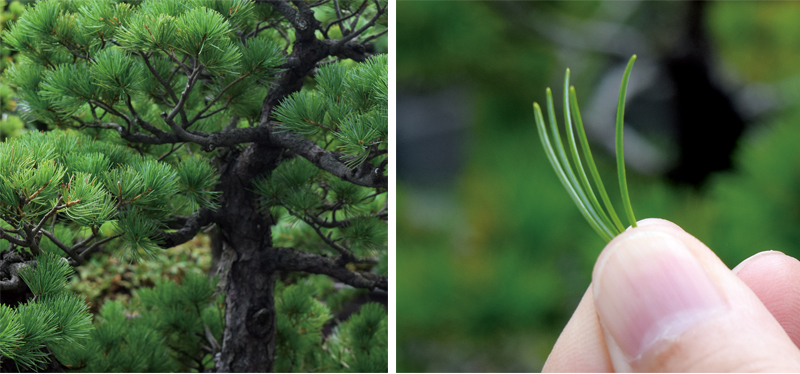
Japan can be broadly classified into two areas: the southern area (southern Japanese white pine) and the northern area (northern Japanese white pine). Its natural habitats in the southern area are mainly found in Shikoku and Chugoku region, and the northern area in the Tohoku region. The southern Japanese white pine has pale green foliage with slightly short and soft leaves and slightly open leaf bunches, while the northern Japanese white pine has dark green foliage with slightly longer and twisted leaves and white striations on the underside of the leaves. On top of the southern and northern lineages, the leaf characteristics, skin characteristics, and so forth differ depending on the natural habitat.
The famous Shikoku Japanese white pine grown in Shikoku, the Nasu Japanese white pine grown around Mount Nasu, and the Azuma Japanese white pine grown in the Azuma mountain range in Fukushima Prefecture—Japanese white pines grown in these three areas are famous and are known as the three great Japanese white pines. From the Meiji to the Taisho and early Showa eras, the mountains of Shikoku provided the bonsai world with many excellent materials. Japanese white pines grown in the mountains of Shikoku and the subalpine zones of the Ishizuchi mountain range, the highest peak of western Japan, are called the Shikoku Japanese white pines. They are largely classified into two varieties: the Akaishi Mountain and the Ishizuchi Mountain.
All in all, it has great tree shapes and short foliage—it is the best-known Japanese white pine. For the Akaishi Mountain variety, its leaves are thicker and look more natural, and it is designated as a natural monument by Ehime Prefecture. As for the Ishizuchi Mountain variety, it has softer foliage that looks feminine. Due to overharvesting in the past, permitted local seed collectors now collect the seeds systematically and selective cultivation using highly particular materials is done by the Akaishi-Goyomatsu Bonsai Association. Virgin forests of the Japanese white pine that still exist today are the fruit of our predecessors’ passionate longing to protect the materials and efforts to revitalize bonsai.
The greatest treasure of Japanese bonsai: the characteristics of the Akaishi-Goyomatsu
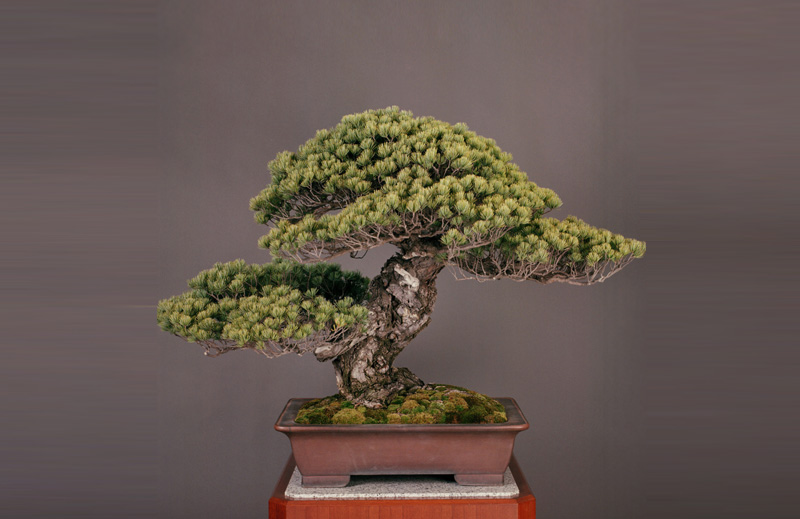 There are many kinds of Japanese white pine in Japan, but the Shikoku Japanese white pine, namely the Akaishi-Goyomatsu created in the Shikokuchuo City of Ehime Prefecture, is so highly valued that it is called the “Queen of Bonsai”.
The Akaishi-Goyomatsu is made into a bonsai as naturally as possible without creating any unnatural bends or trunk patterns. From it, you can sense the majestic nature and no presence of any human intervention.
Its graceful form that embodies softness and feminine suppleness is the very presence of a queen.
The artisans are particular about protecting the original species of Akaishi Mountain, where Akaishi-Goyomatsu grows natively. They do not do any grafting or cuttage and continue to take young trees from the mountains or grow them from seeds. The resulting form is the current Akaishi-Goyomatsu.
Over the years, they have passed on the techniques from generation to generation.
There are many kinds of Japanese white pine in Japan, but the Shikoku Japanese white pine, namely the Akaishi-Goyomatsu created in the Shikokuchuo City of Ehime Prefecture, is so highly valued that it is called the “Queen of Bonsai”.
The Akaishi-Goyomatsu is made into a bonsai as naturally as possible without creating any unnatural bends or trunk patterns. From it, you can sense the majestic nature and no presence of any human intervention.
Its graceful form that embodies softness and feminine suppleness is the very presence of a queen.
The artisans are particular about protecting the original species of Akaishi Mountain, where Akaishi-Goyomatsu grows natively. They do not do any grafting or cuttage and continue to take young trees from the mountains or grow them from seeds. The resulting form is the current Akaishi-Goyomatsu.
Over the years, they have passed on the techniques from generation to generation.
Characteristics of Akaishi-Goyomatsu
・vivid green foliage
・dark silver lining on the underside of the leaves
・grows tightly
・Trunk skin tends to show its age early
・excellent sprouting
・beautiful shape
Our thoughts

We want to deliver Japanese scenery to everyone. We want to pass on our scenery to the future. In our hometown of Doicho, located in the Shikokuchuo City of Ehime Prefecture, there is a Japanese scenery that is being lost to the modern world. Designated as a natural monument, the virgin forest of Japanese white pine that grows natively in the Akaishi Mountain, which faces the Seto Inland Sea, and the Akaishi-Goyomatsu that has watched over Japan for a thousand years—we want to preserve them for the future.
What we, bonsai artisans, can do is to continue to create the natural scenery of the Akaishi Mountain through Japanese white pine bonsai. As bonsai artisans, we want to continue protecting what is important so that the Japanese scenery will not be lost. That is the mission of bonsai and our job.
Japan’s top bonsai artisans
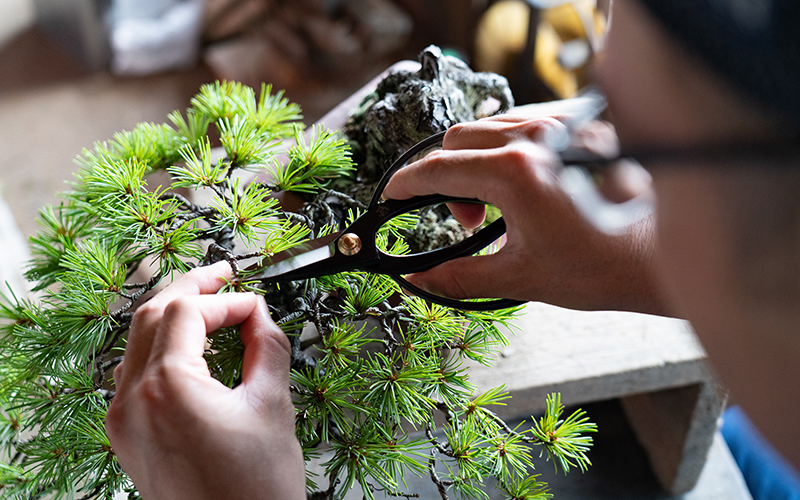
Doicho in Shikokuchuo City of Ehime Prefecture, which has prospered as a bonsai production area since long ago, still has tens of thousands of bonsai planted and created to this day. Artisans who have been creating bonsai for generations have been creating Akaishi-Goyamatsu while studying it daily. Many enthusiasts and foreigners come here to learn the technique of bonsai.
Artisans have different characteristics. Some demonstrate their skills all over the world, some focus on teaching bonsai techniques, some win top prizes in national bonsai competitions, and others research the development of new species and new production techniques. Each of them also has a species they specialize in and their own techniques, and the resulting bonsai reflects their individuality.
It is a good idea for bonsai enthusiasts to gather information and talk to many artisans in person as finding the ideal bonsai for oneself is dependent on meeting good artisans and creators. Some artisans are traditional and continue to create deep bonsai, some are more artistic, and some try to create evolving bonsai by implementing new aspects. There are all kinds of people, but all of them enjoy talking so feel free to talk to them. If you get to know them well, they may just create the bonsai you have in your mind.
Akaishi-Goyomatsu Export Promotion Association
| Address | 1525 Doicho Ueno, Shikokuchuo City, Ehime Prefecture, 799-0721, Japan |
| Phone number | 0896-74-2698 |
Coming by plane
1 hour and 15 minutes by car from Takamatsu Airport,1 hour and 20 minutes by car from Matsuyama Airport
Coming by car
The highway from Okayama or Takamatsu
15 minutes from the Doi Interchange
The highway from Hiroshima or Ehime
15 minutes from the Niihama Interchange
Coming by train
15 minutes by taxi from Sekikawa Station, JR Yosan Line
How to get Akaishi-Goyomatsu, a high-quality Japanese Bonsai
Those who live in a European country can get it easily. There is a bonsai management site, run by a Japanese creator group, in Frankfurt, Germany. Hundreds of carefully selected bonsai from Japan are sent there every year; you can see the actual bonsai in Germany. If you find any bonsai you like, you can buy it on the spot and bring it home.

Do not worry if you cannot go to Germany. You can see the bonsai taken care of in Germany on the internet. You can order any bonsai you like, and it will be delivered by land from Germany to any European country. Similarly, you can also see the bonsai taken care of in Japan on the internet. Any orders can be delivered to you from Japan via Germany.


All of the bonsai are authentic Japanese bonsai delivered directly from the production areas in Japan—not a single bonsai is fake. This is because we check them personally and send them to Germany directly. You can find authentic Japanese bonsai here in Frankfurt, Germany.
Export System
Only high-quality bonsai that have cleared the strict quarantine is sent to Germany.
 The export is carried out using a system that allows us to verify the records from production to distribution, and the bonsai are transported from Japan to Germany by a team of experienced professionals who take the utmost care to ensure that the bonsai is not damaged.
The export is carried out using a system that allows us to verify the records from production to distribution, and the bonsai are transported from Japan to Germany by a team of experienced professionals who take the utmost care to ensure that the bonsai is not damaged.

Quality Certification
The bonsai comes with a certificate. Every bonsai exported from Japan is issued with a certificate as proof of quality by the Japanese Bonsai Management Organization.
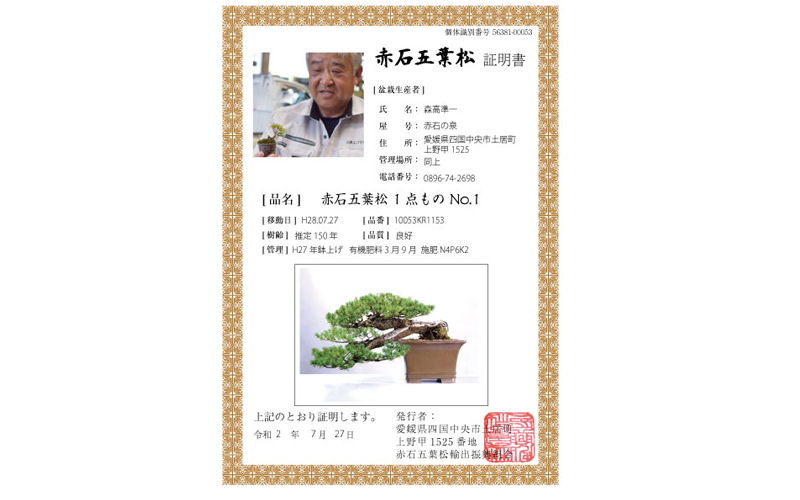
The certificates that come with every bonsai contain everything from bonsai records to the creator’s information and transportation information. They are managed by identification numbers, so even if you were to give away your bonsai, the value would not diminish as the certificate would prove the authenticity.
Request of Akaishi-Goyomatsu Catalogue
If you wish to learn more about Akaishi-Goyomatsu or are interested in purchasing one, please download our digital booklet below. You can find hundreds of artistic bonsai and more detailed information about Akaishi-Goyomatsu.






















